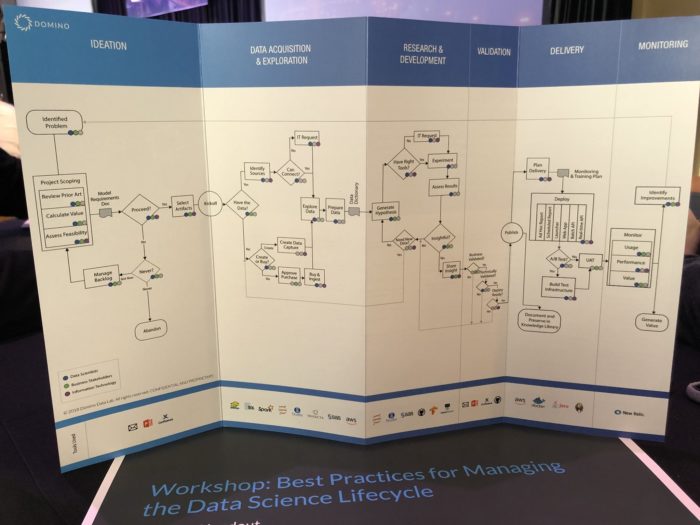Last week, I shared some lessons learned from a Domino Data Science Pop-up that I attended a…
Data / AI / ML
A few weeks ago, I attended Rev, a summit for data science leaders and practitioners organized by Domino. I have previously shared blog posts on the key takeaways from last year’s event (which was one of the best data science conferences I’d been to), including how to define a data scientist and the differences between data science and data […]
Last week, I shared some lessons learned from a Domino Data Science Pop-up that I attended a…
A few weeks ago, we hosted our second marketplace meetup in San Francisco. The night…
A few weeks ago, I attended Rev, a summit for data science leaders and practitioners organized by Domino. I have previously shared blog posts on the key takeaways from last year’s event (which was one of the best data science conferences I’d been to), including how to define a data scientist and the differences between data science and data engineering.
This year, one of the core themes was the management of data science projects. I had never thought about it this way before, but in fact, models are the output of a data scientist’s work.
My biggest takeaway was the realization that when it comes to building products and businesses, it’s important not only to be data-driven, but also to be model-driven.
What does it mean to be model-driven?
If data is oil, then the model is the engine. Data, and code for that matter, can be unitized, whereas models are more complex. Models are effectively created with data and code as building blocks. As a result, models can’t be treated in the same way as data or code, and there are definitely best practices for managing the data science lifecycle.

Generally speaking, the overall data science lifecycle can be viewed in an aggregate of stages:
Most of us likely have intentionally plotted just a few of these stages. While it might take a lot of work to put a comprehensive workflow like this in place, the biggest benefit is that we can truly measure everything. This hopefully translates to greater efficiency and more effective collaboration between all stakeholders, with more auditability and reproducibility.
If you’re interested in more details on building a model-driven business, I recommend checking out Domino’s whitepaper on the topic.
Crypto / Blockchain, Portfolio, Version One
We’re excited to announce our investment in Loon, a Canadian company building the country’s first regulated digital dollar. Version One led Loon’s $3M pre-seed round, alongside Garage Capital and a group of strategic Canadian angel investors. Loon is on a mission to create trusted, transparent payment infrastructure for Canada’s digital economy — starting with CADC, […]
As 2015 comes to an end, it’s time to reflect on what we’ve done and…
As the Internet evolves, the venture capital business starts evolving and we have been seeing…